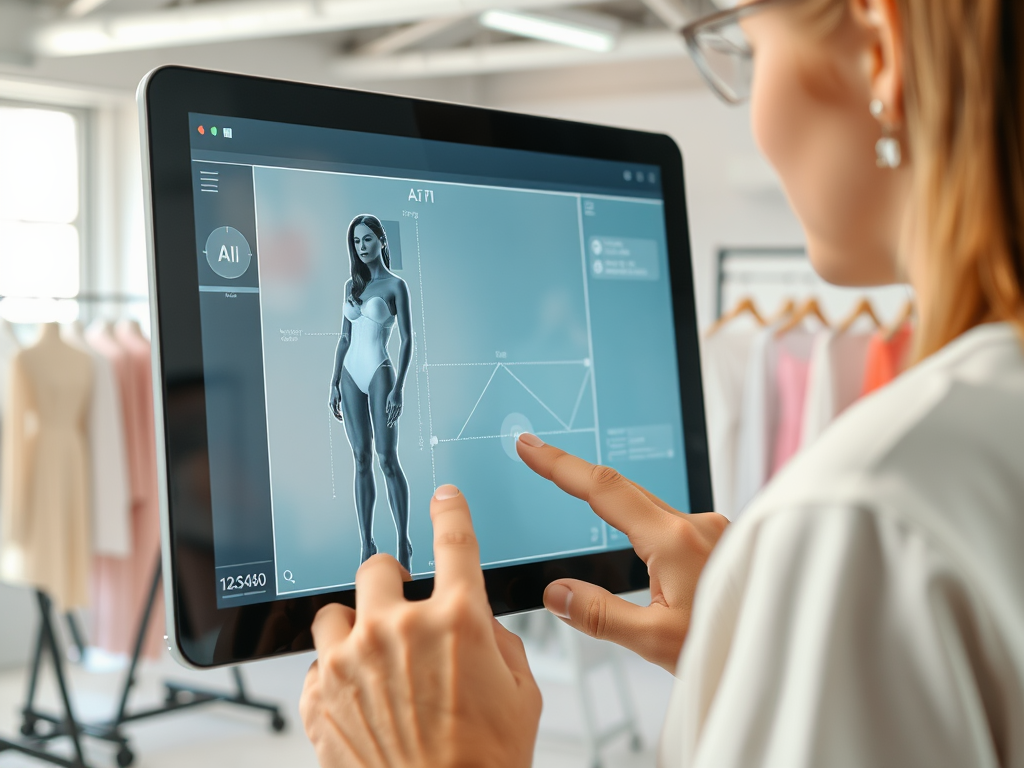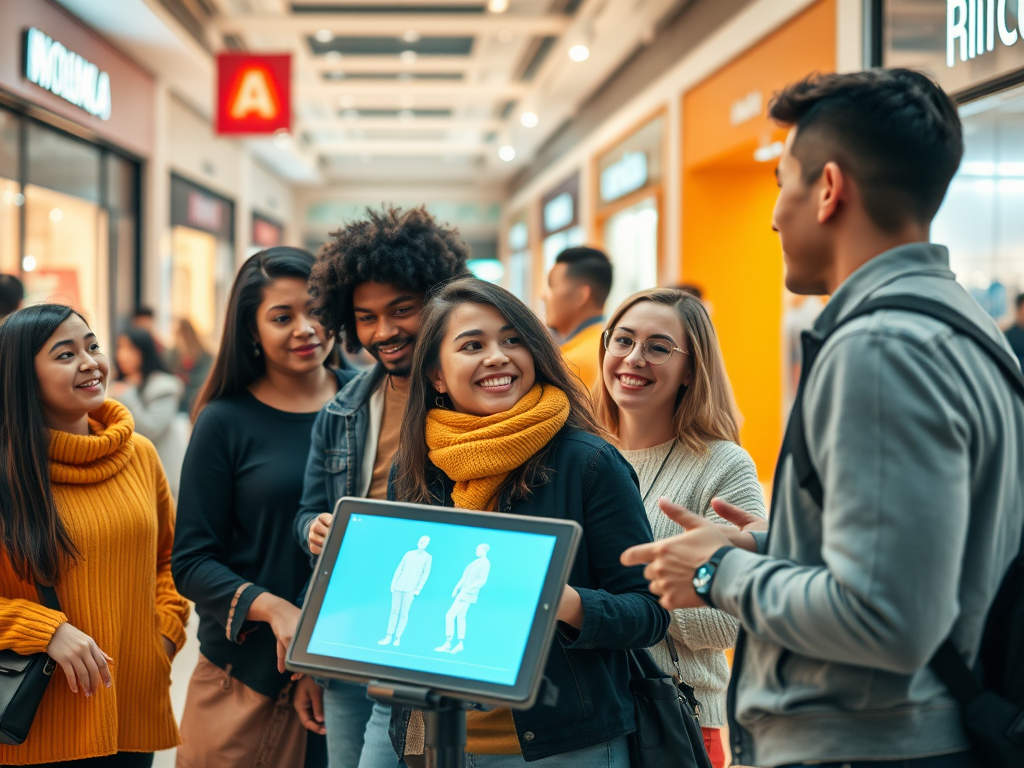Revolutionized AI technologies have unlocked a myriad of possibilities whose impact is pronounced in almost every industry. The fashion sector is one of the first to benefit from this transformation. The technology is now capable of creating virtual clothes, as well as simulating the body, making the shopping experience more engaging and tailored. In this new era, profound aids like DeepNude AI have honed the proficiency level of processes once perceived to be impossible, not only redefining the shopping experience but also transforming how fashion designers create. Imagine the power of seeing yourself wearing various clothes without any of the doubts surrounding actual online shopping! That is the power consumers have now. While these brands embrace changes, one can only marvel at the potential impacts sustainability and effectiveness in fashion might have. The fusion of AI and virtual clothing technology might change the dynamics of fashion as we know it.
The Rise of Virtual Clothing

Amid these circumstances, the surge in popularity of sustainable fashion options has caused brands to adopt virtual clothing, permitting customers to partake in fashion without bearing the costs that comes from traditional garment production. Such action appeals to modern consumers who are concerned about the environment while contributing to the overall effort of waste reduction. These digital garments, or fashion images, can be placed on the user’s avatar, or even projected onto photos through augmented reality (AR). Brands are also adding virtual try-on features on their websites and apps, allowing users to select the right fit without going to a physical store. This change also allows creativity, giving designers the opportunity to craft numerous styles with different materials without spending money on physical prototype garments. This change challenges prevailing assumptions of possession and consumption of fashion.
Benefits of AI in Body Simulation

The development of AI technology is essential in the advancement of body simulation as it provides great benefits that guarantee better user experiences. The primary benefits of AI in this area can be listed as follows:
- Improved Fit: AI algorithms analyze user data to provide more accurate sizing suggestions, ensuring a better fit.
- Customization: Users can tailor outfits to their preferences, leading to a unique and personal shopping experience.
- Reduced Returns: By providing better fit predictions, the number of returns can be significantly decreased, promoting efficiency.
These benefits do not stop at the consumers, as brands are likely to benefit from increased customer satisfaction and loyalty. Accurate body measurements are vital for virtual clothing AI, and algorithms are fundamental to this.
AI Algorithms work with sophisticated machine learning models to analyze images alongside statistical data to generate accurate sizing recommendations. This advancement reduces the chances of garments not fitting, something which has been a major disadvantage when shopping online. The resulting experience can enhance consumer confidence while providing brands with insightful data concerning the sizing. Regardless, to achieve these benefits, there needs to be stringent data privacy controls that make users feel safe when sharing their information. This is a remarkable step towards integrating technology and fashion.
The Role of Augmented Reality (AR)
The combination of augmented reality technology with virtual clothing enhances AI’s abilities as consumers can see how clothes would look on them in real-time. Users can view how clothes would fit on themselves via the lenses of their smartphone cameras or other specialized AR gadgets before even purchasing them. This type of engagement facilitates the interaction of the online and offline world of shopping and enhances the shopping experience. Moreover, this technology is capable of showcasing apparel within diverse scenes which allows more imagination, and gives meaning to possible purchases. The constantly increasing use of AR in fashion sectors marks a tendency towards multichannel shopping worlds which capture customer interaction. As new developments are rolled out, there is likely a complete transformation in how customers experience fashion with their use.
Impacts on the Fashion Industry
Both clients and designers are being served through the use of AI and virtual clothing technology. These innovations serve to change entire processes for design and supply chains. Businesses are realizing that AI enables them to improve management of stock, production scheduling, and trend forecasting. A table illustrating the impacts of AI on various aspects of the fashion supply chain is shown below:
| Aspect | Traditional Approach | AI-Driven Approach |
|---|---|---|
| Design | Manual prototyping | Virtual simulations for rapid iteration |
| Inventory | Static forecasts | Dynamic, data-driven predictions |
| Sustainability | High waste production | Reduced waste and environmental impact |
The shift towards eco-friendly clothing practices is best illustrated by the integration of virtual clothing technologies. The production of various apparel items and associated garments is reduced due to the advancements in AI, thus supporting a circular economy. This is positive for AI. This growth in ‘sustainable fashion’ is also incredibly important considering the pollution caused by the clothing industry. There is also growing pressure on brands to take responsibility for their actions as they begin to adopt these new technologies. Consumers also have an equally important role in initiating this change with their buying behavior, creating a move towards sustainability. The combination of technology with environmental protection can transform the future World of Fashion.
Challenges to Overcome
Even with the multitude of advantages, several obstacles still slow down the integration of AI in virtual clothing. Problems concerning data breach continue to be an area of focus because people need to feel safe when giving out sensitive body information for proper body simulation. In addition, there is a great need for appealing and realistic high quality 3D rendering technologies that ensure accurate digital representations. Other problems include consumer doubts about the authenticity of the virtual clothes and the limitations other non-flagship brands face due to sophisticated system solutions. Providing an exceptional virtual clothing experience is only achievable through extensive research, constant technological advancements, and bettering the overall user experience that will ultimately shift the consumer’s behavior.
Conclusion
The realm of virtual apparel and body simulation has a highly potential future in AI innovations for the fashion industry. With each technological advancement, top brands who are early adopters of these innovations will lead the market in providing unique sustainable and entertaining shopping experiences. The use of AI and AR technology goes beyond improving inventory management and design. It also targets an environmental sensitive market. At the end of the day, The convergence of technology with fashion makes us change our outlook towards clothing, consumption and sustainability. The convergence of the real world and the virtual world is no longer a hype; it is a modern day reality driving the next phase of evolution in fashion.
Frequently Asked Questions
What is virtual clothing? Virtual clothing refers to digital garments that are designed to be worn by avatars or placed over pictures using AR technology to help users see how the clothing looks without physically wearing them.
How does AI improve body simulation? AI improves body simulation by analyzing a user’s data with advanced algorithms which leads to better prediction of the fit and more accurate personalized suggestions.
What role does AR have with virtual clothing? AR allows the user to see how the virtual clothing looks on their body in real time improving the shopping experience.
What are the sustainability benefits of AI in fashion? Using AI in fashion increases responsiblity because it reduces the need for actual clothing samples and cuts down on waste.
What challenges does the fashion industry face when using AI technology? Some of the most important challenges are data security, digital quality representation, and skepticism about real clothing versus virtual clothes.
